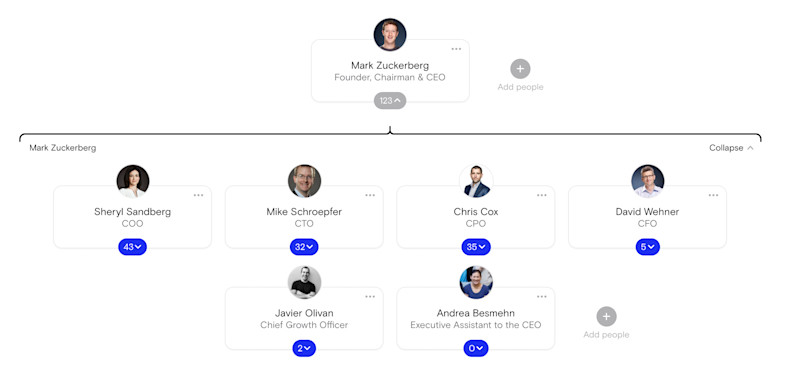Corporate structures are complex ecosystems with clearly defined roles and responsibilities. Understanding who reports to the president of a company is essential for those looking to climb the corporate ladder, oversee operations effectively, or simply broaden their knowledge of how businesses function.
This article will break down the key roles that report to the president and how they contribute to a company’s success. If you’re an executive, management professional, or business student, having a clear understanding of these dynamics will help you grasp the nuances of corporate governance.
The Role of a President Within a Company
The president of a company generally functions as one of the highest-ranking executives in the management team, often second only to the CEO (Chief Executive Officer) or in some cases even serving as the CEO depending on the organization’s structure. The president is primarily responsible for managing the day-to-day operations of the business and overseeing the implementation of strategic initiatives set by the board of directors.
While the CEO provides overarching leadership and vision, the president acts as the operational leader, ensuring plans are executed effectively. This makes the president a central figure in the organization, requiring them to coordinate activities across various departments and among senior executives.
Common Reporting Line to the President
Who reports to the president of a company often depends on the size, structure, and specific requirements of the organization. However, here are the key roles typically reporting directly to a company president:
1. Chief Operating Officer (COO)
The COO is usually the president’s right hand when it comes to operations. This role focuses on the corporation’s day-to-day activities, such as production, marketing, sales, and personnel. The COO ensures the smooth functioning of these operational areas, providing direct reports and feedback to the president.
2. Chief Financial Officer (CFO)
The CFO manages the financial health of the company and reports financial performance directly to the president. Responsible for budgets, financial forecasting, and analyzing revenue streams, the CFO keeps the president informed about the company’s economic standing and helps with decision-making regarding investments and cost management.
3. Executive Vice Presidents (EVPs)
Larger companies often have multiple Executive Vice Presidents who oversee specific areas like marketing, product development, IT, or HR. These executives report to the president, ensuring their respective departments align with the overall corporate strategy.
4. Key Department Heads
Depending on the company size, department heads such as those from legal, research and development (R&D), or compliance may report directly to the president. These individuals are tasked with ensuring their teams meet department-specific goals and align with organizational objectives.
5. General Managers (GMs)
For companies operating in multiple regions or divisions, general managers might report to the president. The GMs oversee specific regions or business units and act as the primary point of contact between those areas and the executive team.
6. Other Senior Leadership Roles
Occasionally, roles like the Chief Technology Officer (CTO) or Chief Human Resources Officer (CHRO) also report to the president, contributing insights into their respective areas of expertise and organizational planning.
The President’s Relationship with the CEO
The dynamic between the president and the CEO often influences the reporting structure. In many companies, the president reports to the CEO while managing the senior positions discussed above. For smaller organizations or in cases where the titles of CEO and president are held by the same individual, these reports may go directly to that person.
Special Scenarios and Reporting Variances
Not all companies are structured identically. Some organizations, particularly startups and smaller businesses, use different titles and hierarchies. For instance:
- Single-Tier Leadership Structures: Startups often operate with less strictly defined tiers of management, where founders or co-founders take on multiple executive-level responsibilities, blending roles like CEO and president.
- Family-Owned Businesses: These often have less conventional reporting lines, where family members may directly report to presidents without adhering to the usual hierarchy.
- Nonprofit or Government Entities: Reporting lines might also vary depending on the operational model and organizational goals.
It’s worth noting that who reports to the president ultimately depends on how power and responsibilities are distributed within the company.
Why Reporting Structures Matter
The efficiency of a company partially hinges on its reporting structure. Clear lines of reporting ensure proper communication, accountability, and focus across all departments. When team members and executives know exactly whom to report to, decisions can be executed faster, resources allocated efficiently, and long-term objectives achieved with less friction.
Key Takeaways
To summarize:
- The president acts as the operational hub of the organization, ensuring that the company strategy is executed effectively.
- Roles like the COO, CFO, EVPs, department heads, and GMs are among the typical positions reporting to the president.
- Reporting structures vary depending on the size, style, and goals of the organization, especially in startups or nonprofits.
Understanding the reporting lines to the president provides a clear picture of how leadership functions within a company and ensures coordination across multiple departments.
For business professionals, executives, and students studying corporate structures, achieving familiarity with these hierarchies enables better strategic planning and decision-making for leadership roles.








